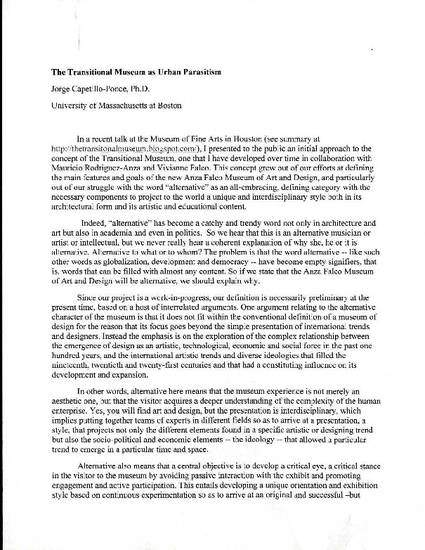
In a recent talk at the Museum of Fine Arts in Houston, I presented to the public an initial approach to the concept of the Transitional Museum, one that I have developed over time in collaboration with Mauricio Rodriguez-Anza and Vivianne Falco. This concept grew out of our efforts at defining the main features and goals of the new Anza Falco Museum of Art and Design, and particularly out of our struggle with the word "alternative" as an all-embracing, defining category with the necessary components to project to the world a unique and interdisciplinary style both in its architectural form and its artistic and educational content.
Indeed, "alternative" has become a catchy and trendy word not only in architecture and art but also in academia and even in politics. So we hear that this is an alternative musician or artist or intellectual, but we never really hear a coherent explanation of why she, he or it is alternative. Alternative to what or to whom? The problem is that the word alternative -- like such other words as globalization, development and democracy -- have become empty signifiers, that is, words that can be filled with almost any content. So if we state that the Anza Falco Museum of Art and Design will be alternative, we should explain why.
Available at: http://works.bepress.com/jorge_capetillo-ponce/7/

This article originally appeared as a series of posts on moodarchitecture: https://moodarchitecture.wordpress.com/